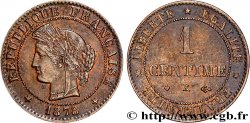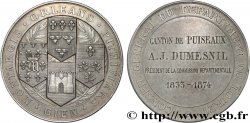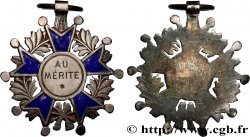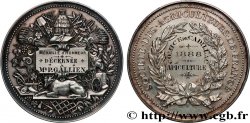E-auction 302-221771 - fme_442556 - III REPUBLIC Médaille pour le croiseur le Tourville
You must signin and be an approved bidder to bid, LOGIN TO BID. Accounts are subject to approval and the approval process takes place within 48 hours. Do not wait until the day a sale closes to register. Clicking on « bid » constitutes acceptance of the terms of use of cgb.fr private e-auctions.
Bids must be placed in whole Euro amounts only. The sale will start closing at the time stated on the item description; any bids received at the site after the closing time will not be executed. Transmission times may vary and bids could be rejected if you wait until the last second. For further information ckeck the E-auctions F.A.Q.
NO BUYER'S FEE.
NO BUYER'S FEE.
| Estimate : | 90 € |
| Price : | 36 € |
| Maximum bid : | 36 € |
| End of the sale : | 28 January 2019 18:19:00 |
| bidders : | 4 bidders |
Type : Médaille pour le croiseur le Tourville
Date: 1928
Mint name / Town : France
Metal : bronze
Diameter : 42 mm
Orientation dies : 12 h.
Engraver PINGRET Arnould-Joseph / MORLON Pierre-Alexandre (1878-1951)
Weight : 35,5 g.
Edge : lisse + Corne BRONZE
Puncheon : corne BRONZE
Coments on the condition:
Intéressante combinaison d’un coin de droit plus ancien lié à un coin du premier quart du XXe siècle. Patine hétérogène. Présence de coups et rayures
Obverse
Obverse legend : A. H. DE COSTENTIN - DE TOURVILLE.
Obverse description : Buste à gauche du comte de Tourville.
Reverse
Reverse legend : TOURVILLE/ CROISEUR DE LA MARINE NATIONALE/ FRANCAISE.
Reverse description : Le navire Tourville et légende en trois lignes.
Commentary
Signée PINGRET au droit, le revers de cette médaille serait de Morlon. Arnould-Joseph PINGRET (.. 1823-1830) était un graveur de médailles et de jetons, élève de Bosio, né à Bruxelles en 1798.
Le Tourville est un croiseur lourd de classe Duquesne, en service dans la Marine nationale française pendant la Seconde Guerre mondiale. Nommé d'après Anne Hilarion de Costentin de Tourville, sa construction est lancée le 4 mars 1925, aux chantiers navals de Lorient.
Anne Hilarion de Costentin (ou Cotentin), comte de Tourville, est un vice-amiral et Maréchal de France, né le 24 novembre 1642 à Paris et mort le 23 mai 1701 à Paris. Présenté à l'âge de quatre ans dans l'Ordre de Saint-Jean de Jérusalem à Malte, il mène très jeune plusieurs campagnes en mer Méditerranée contre les Turcs. En 1666, il intègre la Marine royale et est nommé capitaine de vaisseau l'année suivante. C'est pendant la guerre de Hollande que Tourville se distingue pour la première fois pendant la campagne de Sicile, aux batailles d'Alicudi, d'Agosta et de Palerme en 1676. La paix revenue, il commande une escadre de quatre vaisseaux, en 1679, lorsqu'il est pris dans une tempête au large de Belle-Isle. Son vaisseau Le Sans-Pareil coule et il ne doit sa survie qu'à l'intervention du chevalier de Coëtlogon..
Le Tourville est un croiseur lourd de classe Duquesne, en service dans la Marine nationale française pendant la Seconde Guerre mondiale. Nommé d'après Anne Hilarion de Costentin de Tourville, sa construction est lancée le 4 mars 1925, aux chantiers navals de Lorient.
Anne Hilarion de Costentin (ou Cotentin), comte de Tourville, est un vice-amiral et Maréchal de France, né le 24 novembre 1642 à Paris et mort le 23 mai 1701 à Paris. Présenté à l'âge de quatre ans dans l'Ordre de Saint-Jean de Jérusalem à Malte, il mène très jeune plusieurs campagnes en mer Méditerranée contre les Turcs. En 1666, il intègre la Marine royale et est nommé capitaine de vaisseau l'année suivante. C'est pendant la guerre de Hollande que Tourville se distingue pour la première fois pendant la campagne de Sicile, aux batailles d'Alicudi, d'Agosta et de Palerme en 1676. La paix revenue, il commande une escadre de quatre vaisseaux, en 1679, lorsqu'il est pris dans une tempête au large de Belle-Isle. Son vaisseau Le Sans-Pareil coule et il ne doit sa survie qu'à l'intervention du chevalier de Coëtlogon..








 Report a mistake
Report a mistake Print the page
Print the page Share my selection
Share my selection Ask a question
Ask a question Consign / sell
Consign / sell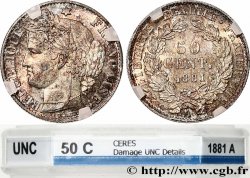
 Full data
Full data